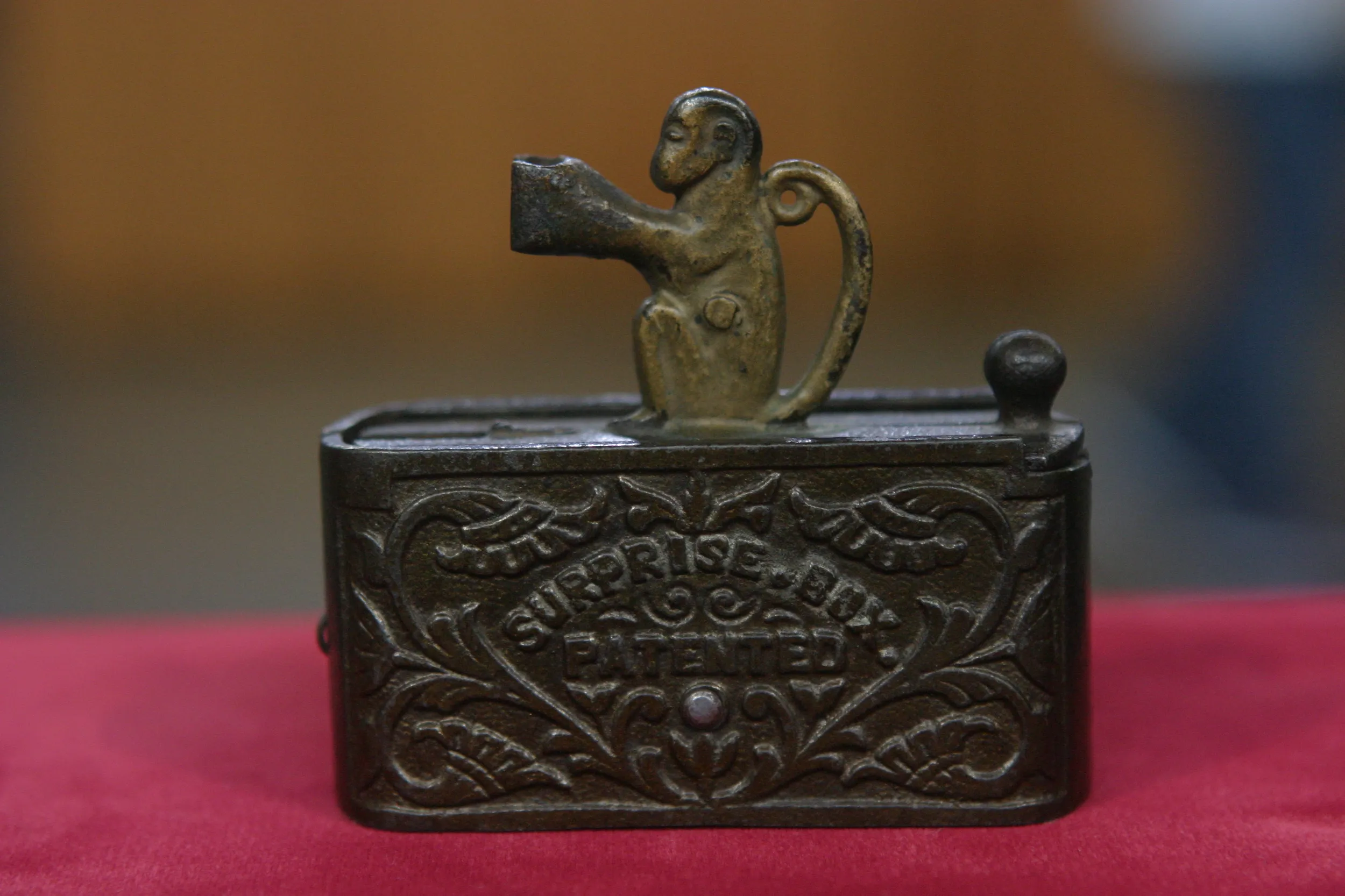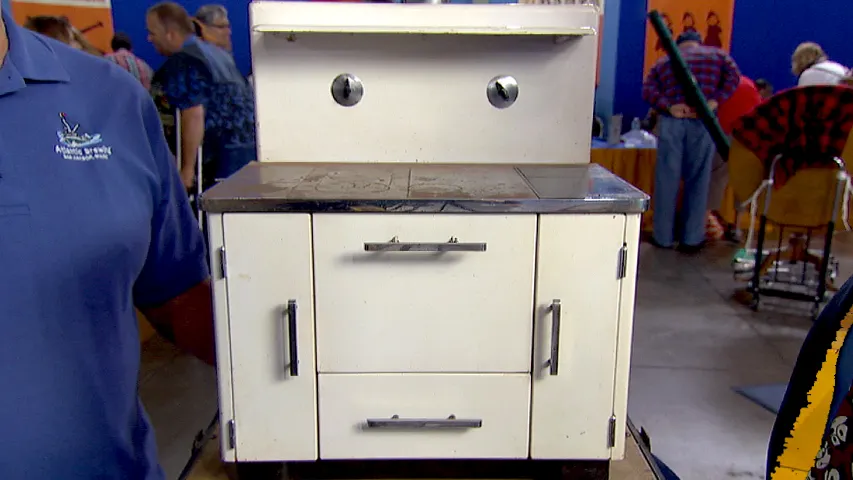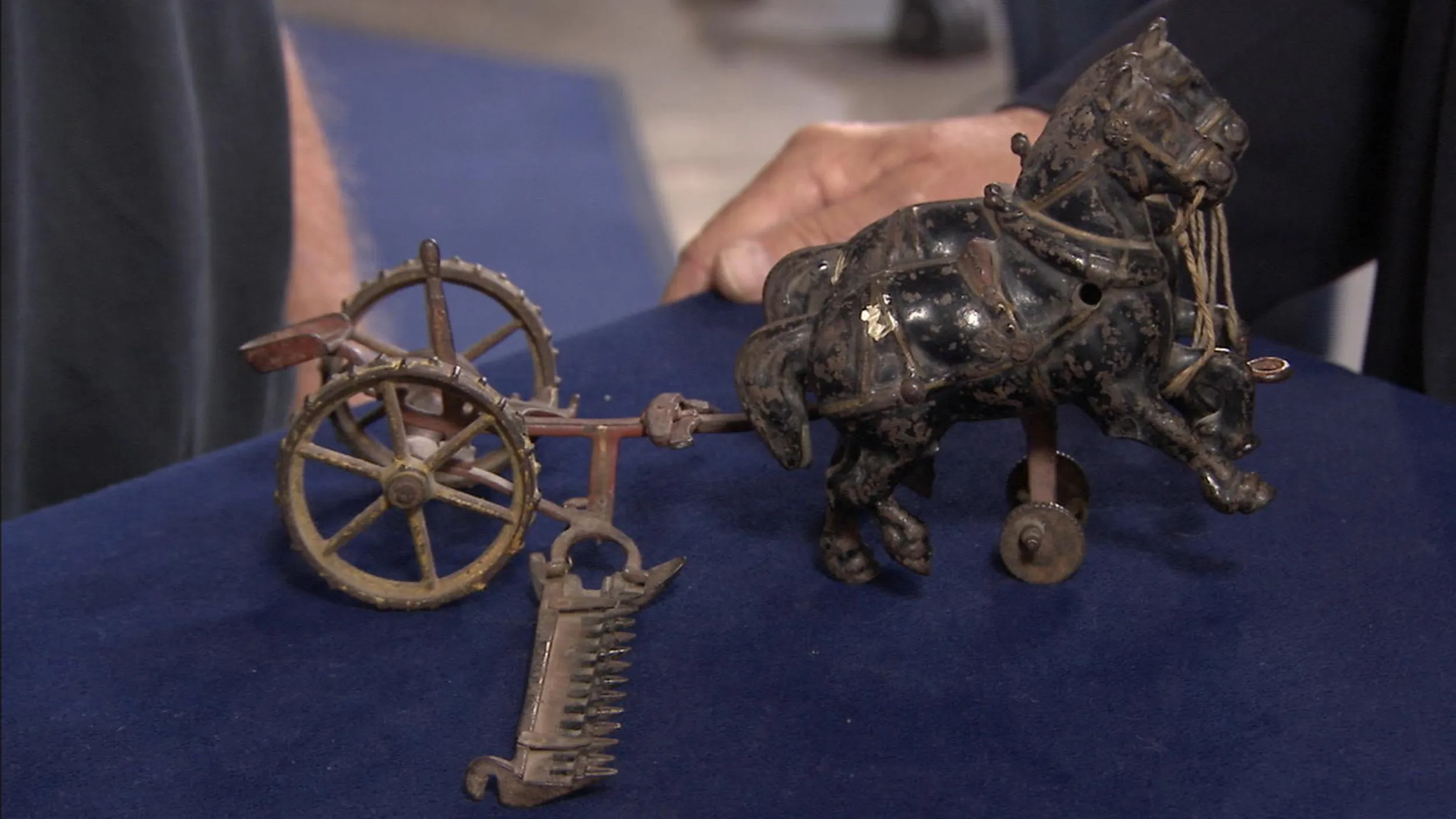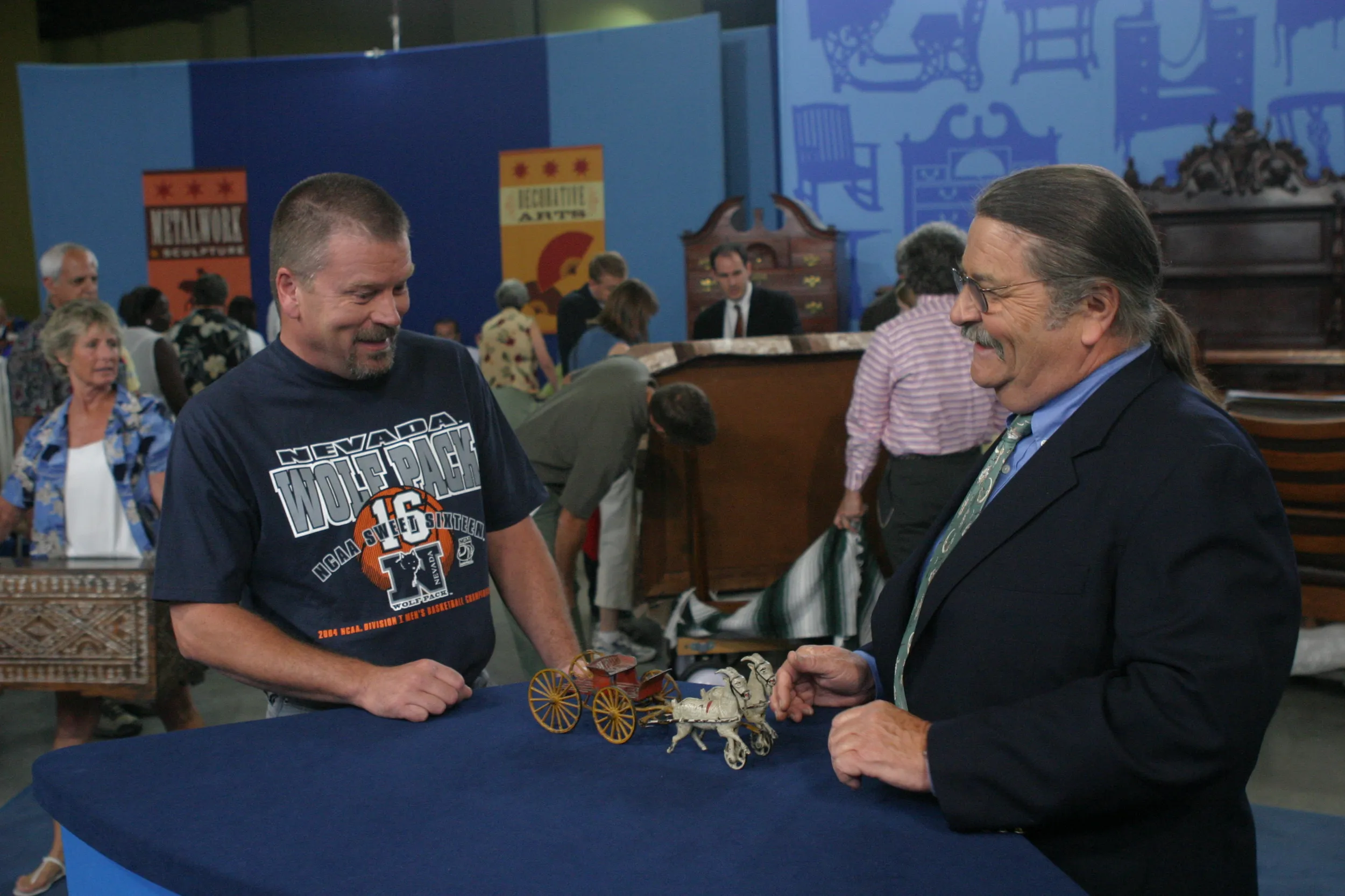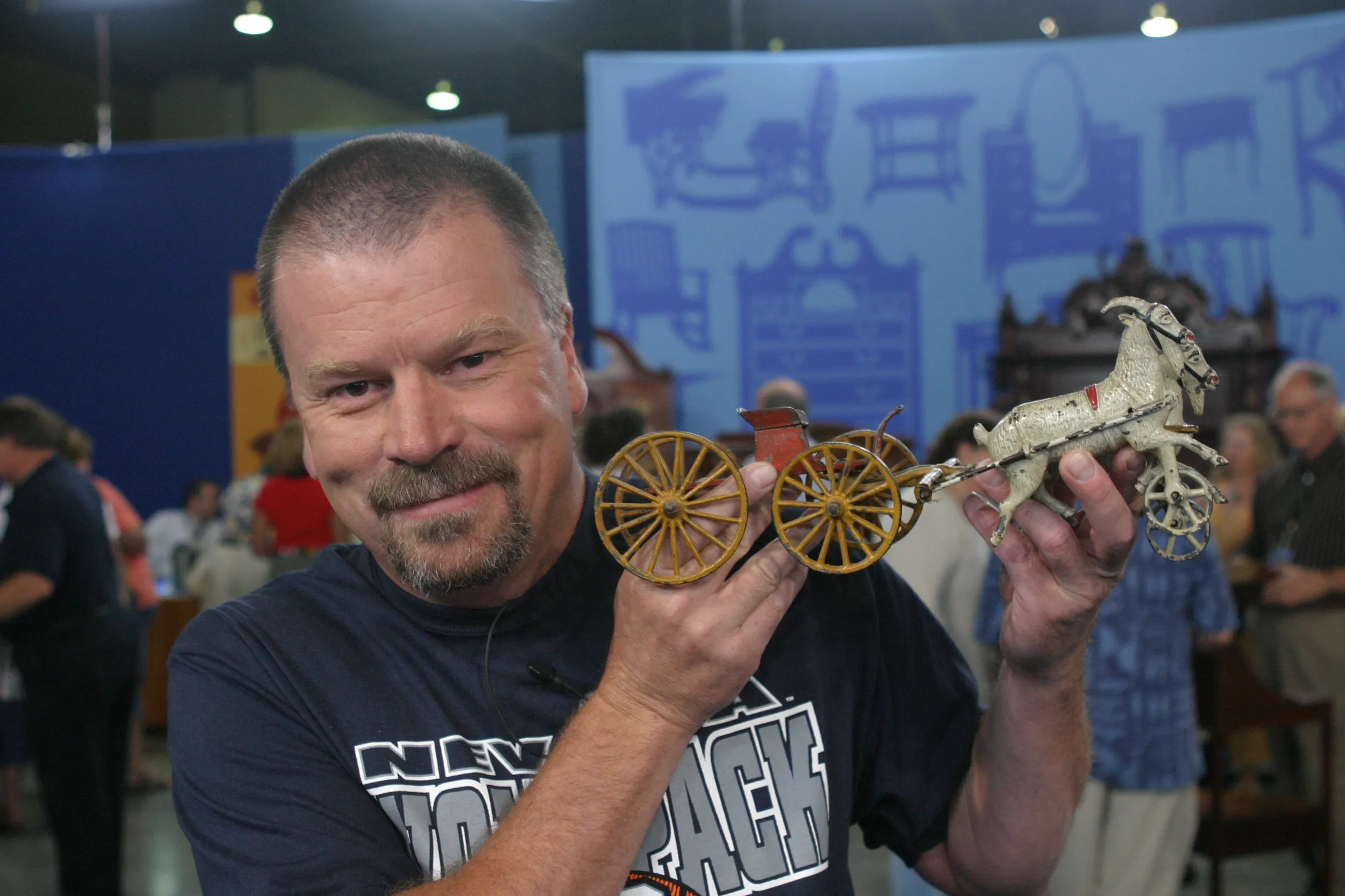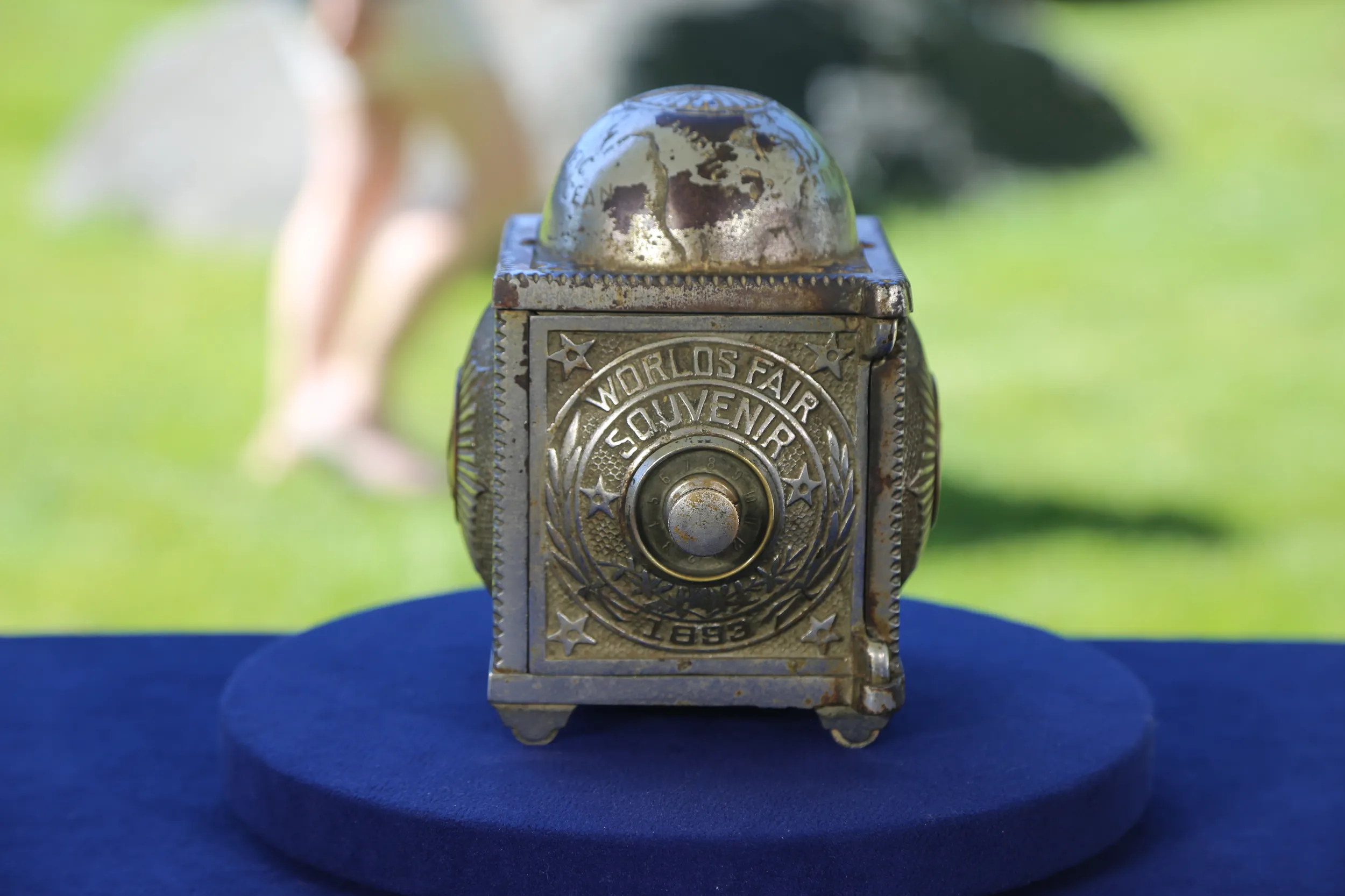GUEST: It was my grandmother's. She acquired it when she was a young girl. It went from her to her son, and then I acquired it from him.
APPRAISER: It's a cast-iron goat cart.
GUEST: Yep.
APPRAISER: It was made in the 1880s, 1890s. The ones that were popular with the kids of this era were those big fire engines, you know, with the galloping horses. But at the same time they made all those, they made some of these, a little more unusual carts like this. It was sort of a Victorian thing, to hook a goat up to a little wagon or cart, and let it pull around the kids. So this is what this was representing. And of course it didn't have the great appeal of the fire engine, so you don't see this that often. It's a little unusual form, which makes it quite rare. It was made by a company named Harris. They weren't one of the more prolific makers of toys, so this is a fairly scarce toy. What gives it a little added appeal is the animation, because just like the horses would gallop on the fire trucks, here the little goats would gallop, as the toy was pulled. So it has that charm too. There's a hole right here.
GUEST: Yes.
APPRAISER: And we're missing a figure. Now, in your history with the piece, did you ever see a figure?
GUEST: I didn't see the figure, no.
APPRAISER: Wish we could find that figure, because that has a great deal to do with the value of this particular piece. The other thing that helps it, of course, is the quality of paint, and the paint is just absolutely beautiful. As it sits right now, at auction, this would bring $2,500 to $3,500.
GUEST: (exhales sharply) Wow.
APPRAISER: The figure for this is a little cast-iron lady. If we had it at auction with the figure, we're looking at, easy, $5,000.
GUEST: Amazing.
APPRAISER: So I'm sorry we can't go look in the sewing box for her figure, because that's where they often ended up, but it's absolutely lovely.


